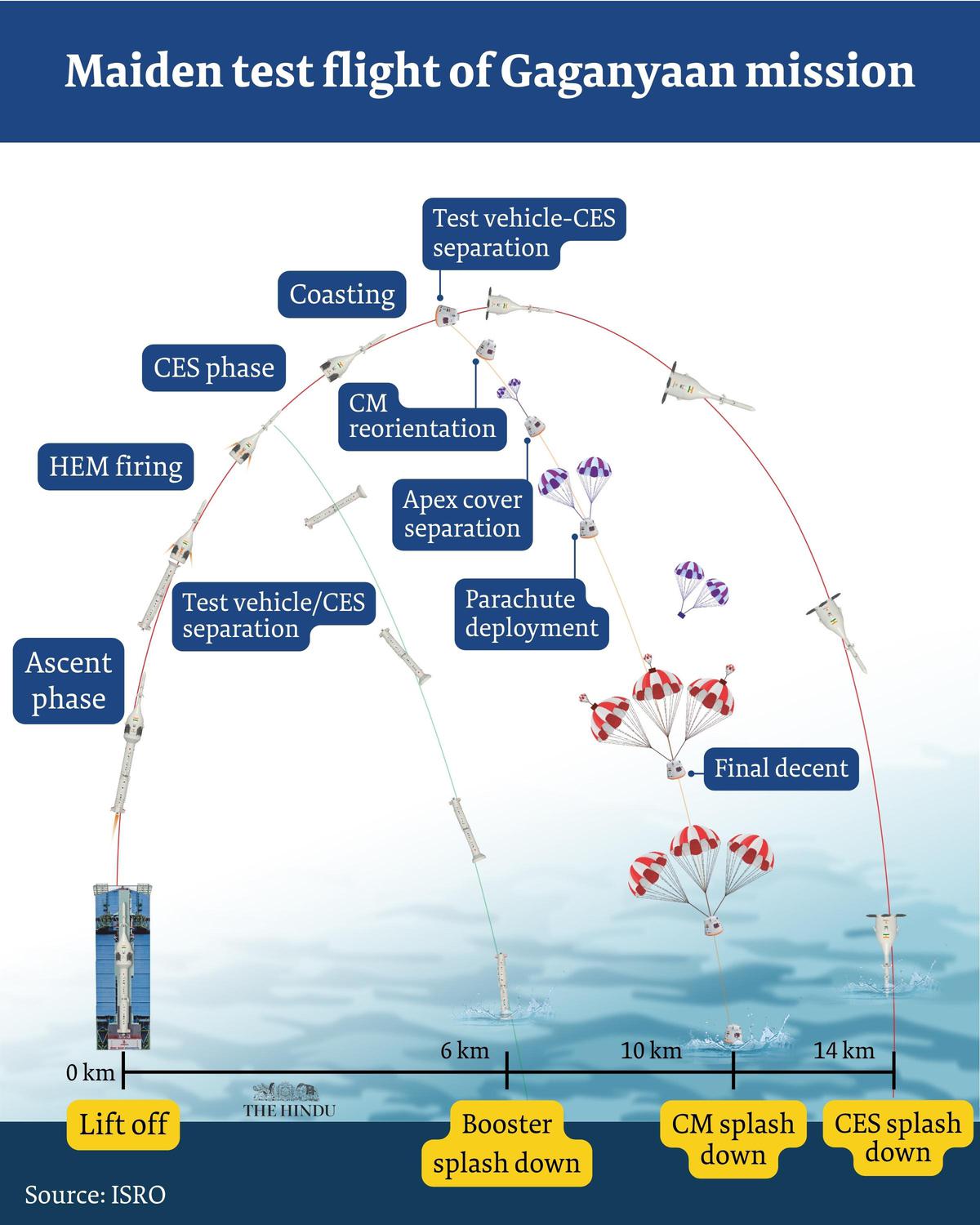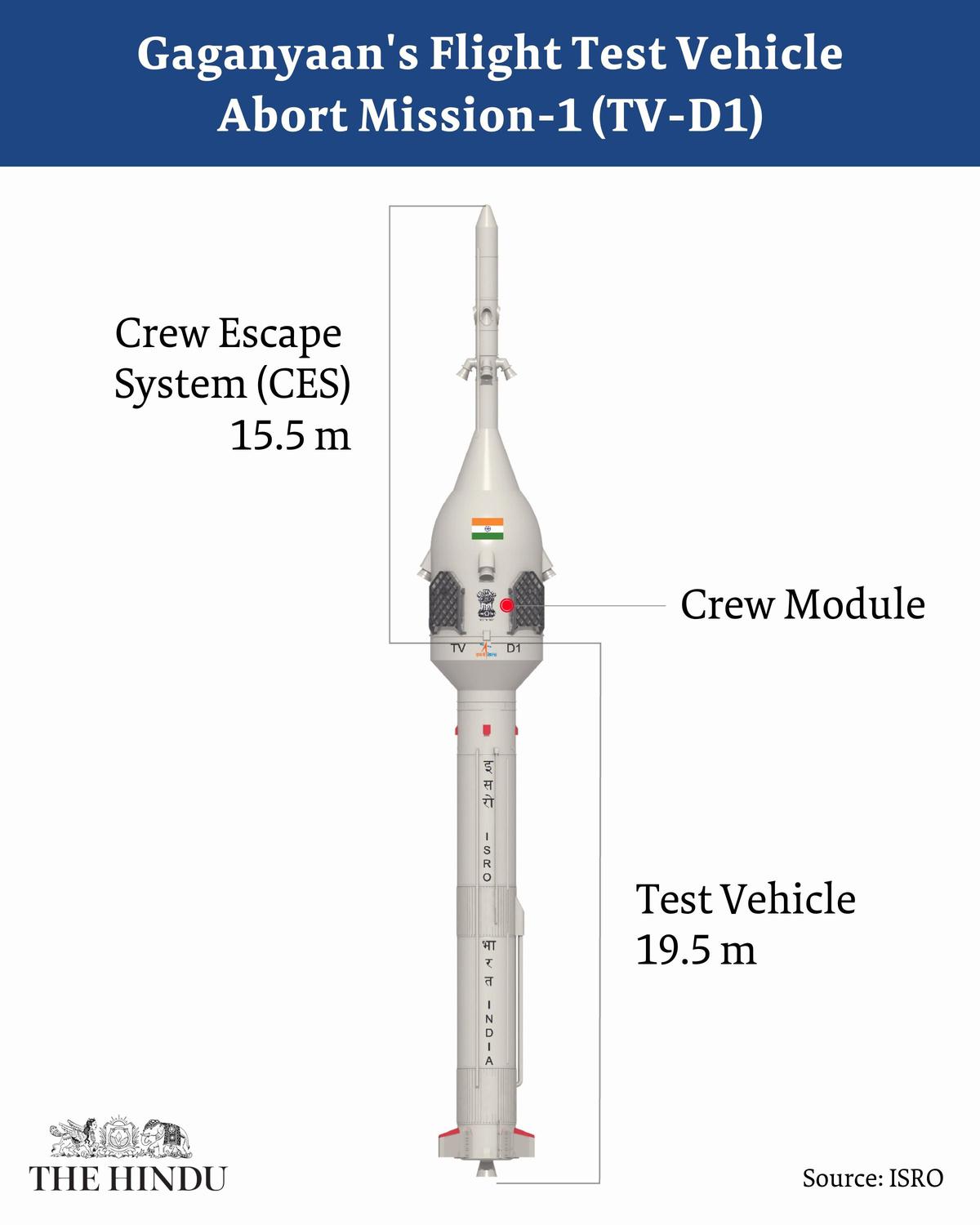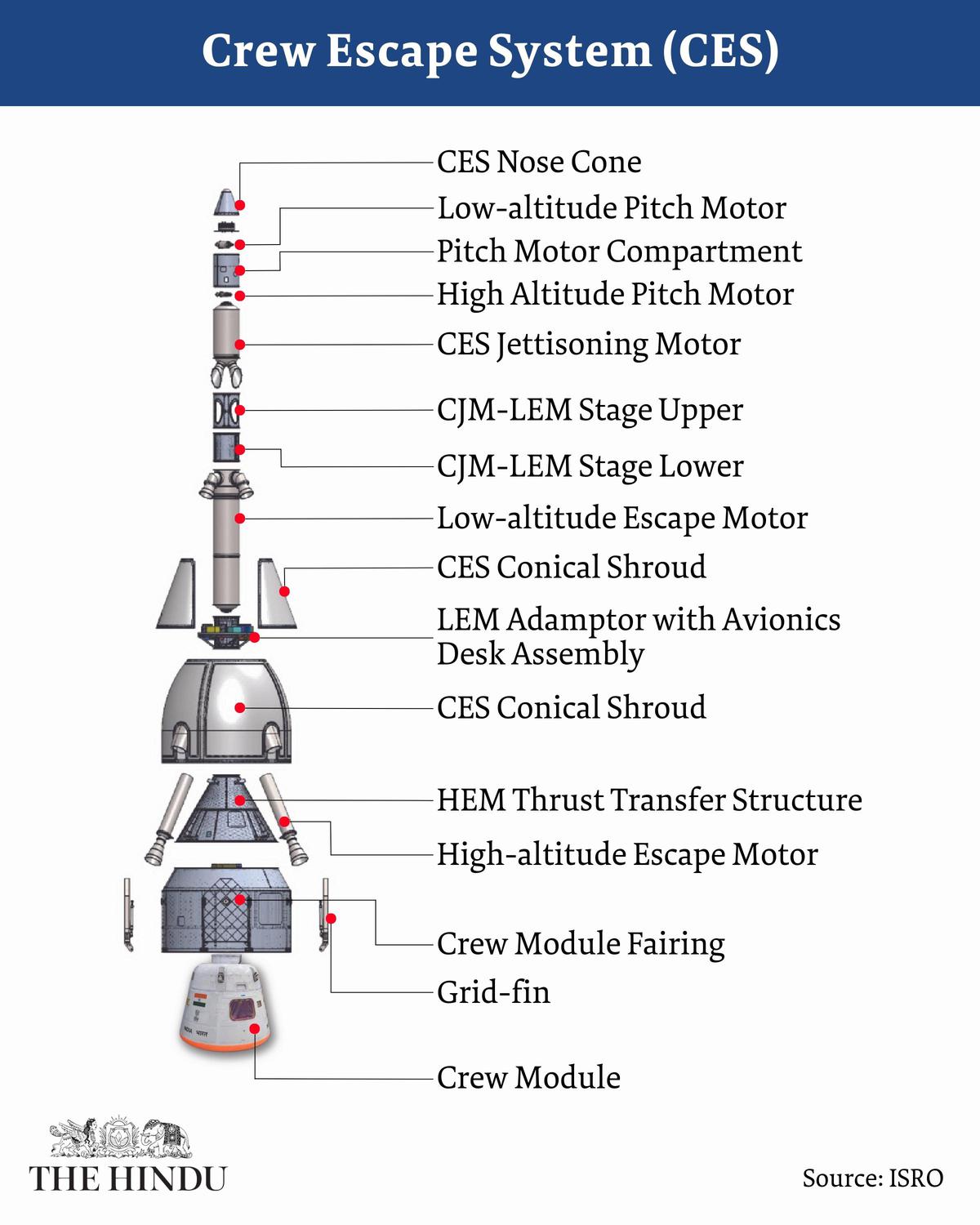Gaganyaan test flight mission successful, crew escape module splashes down


ISRO’s TV-D1 test flight of Mission Gaganyaan lifts off from Satish Dhawan Space Station, in Sriharikota on October 21, 2023. Photo: X/@isro via PTI
ISRO scientists, after a two hour delay and nerve-wracking moments as the engine of TV-D1 failed to ignite initially, on October 21 launched the rocket carrying payloads related to crew safety in Gaganyaan mission with precision from Sriharikota and achieved the goal of Crew Module and Crew Escape separation.
ISRO chief S. Somanath said, Gaganyaan’s first Flight Test Vehicle Abort Mission-1 (TV-D1) was successfully accomplished.
The ISRO announced on X that TV-D1 Mission was fully achieved and that the Crew Escape System performed as intended.
Earlier in the day, the ISRO held the launch of Gaganyaan’s first Flight Test Vehicle Abort Mission-1 (TV-D1) five seconds before lift off from the Satish Dhawan Space Centre in Sriharikota. However, the reason for the launch hold was identified and corrected, ISRO said.
The TV-D1 flight which was to demonstrate the performance of the Crew Escape System (CES) was scheduled to lift off at 8 a.m, however it was rescheduled for 8.30 am.
At 8.30 a.m. the mission director initiated the automatic launch sequence with the lift off again rescheduled at 8.45 a.m. But five seconds before liftoff the launch was called off.

Mr. Somanath said that the onboard computer withheld the launch in view of an anomaly observed.
“The engine ignition has to happen in the nominal course. We have to find out what went wrong with that. We will come back soon after analysing what has triggered the automatic launch sequence holding the vehicle. So what has happened is the onboard computer which is doing the function has withheld the launch in view of the anomaly observed,” Mr. Somanath said.

He added that the launch vehicle is safe and that ISRO will study and analyse anomalies.
“The launch vehicle is safe. We will have to reach the vehicle and look at what has happened. We will find out and understand the anomaly and schedule the launch very soon,” he added. Mr. Somanath even said that the new date for the launch will be announced later after the analysis is completed.
But finally, the vehicle took off at 10 a.m. and the payloads later splashed into the sea as planned, a development that witnessed jubilation.
‘Vehicle went slightly above the speed of sound’
Addressing the media, ISRO Chairman Somanath said, “I am very happy to announce the successful accomplishment of the TV-D1 mission. The purpose of this mission was to demonstrate the Crew Escape System for the Gaganyaan program through a test vehicle demonstration in which the vehicle went up to a Mach number, which is slightly above the speed of sound, and initiated an abort condition for the Crew Escape System to function.”
“The Crew Escape System took the crew module away from the vehicle, and subsequent operations, including the touch-down at sea, have been very well accomplished. and we have confirmation of the data for all of this,” he added.
Mr. Somanath congratulated scientists after the successful touchdown of the crew escape module.
On the occasion, mission Director S. Sivakumar said, “This is like a never before attempt. It is like a bouquet of three experiments put together. We have now seen the characteristics of all three systems with what we wanted to test through this experiment or this mission. The test vehicle, the Crew Escape System, the crew module everything, we have perfectly demonstrated in the first attempt. All the systems performed well.”

“We had been at penance for the last 3 to 4 years and the D-day was today… We are very happy to be able to do it on the very first attempt,” he added.
‘India a step closer to realising first human space flight programme’
Prime Minister Narendra Modi said that the ISRO’s successful launch of a test vehicle as part of its Gaganyaan mission takes India a step closer to realising its first human space flight programme.
In a post on X, he said, “This launch takes us one step closer to realising India’s first human space flight program, Gaganyaan. My best wishes to our scientists at ISRO.”
This flight test vehicle abort mission was conducted to demonstrate the performance of the Crew Escape System as part of the Gaganyaan mission. The objectives of this mission were flight demonstration and evaluation of test vehicle sub-systems, evaluation of CES including various separation systems and CM characteristics and deceleration systems demonstration at higher altitude and its recovery.
Simply put, the objective of the mission was to check the safety of the CES for its capabilities to take the CM to safety in case of an emergency that will require ISRO to abort the mission.
(With inputs from Agencies)

